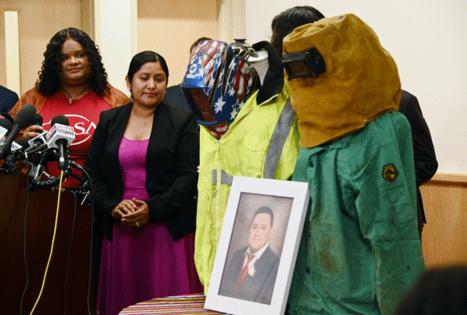Baltimore's Key Bridge collapse lawsuits likely won't be resolved for years
Published in News & Features
BALTIMORE — Last year’s collapse of the Francis Scott Key Bridge spawned more than 50 lawsuits, including cases filed by the families of the six workers who died, parties shipping property on the ill-fated container ship Dali and companies claiming losses from the disaster’s resulting damage to the region’s economy.
It could be years before any of them are resolved. And, experts in maritime law say, many of the cases could be tossed.
For now, legal filings are winding their way through the federal court system in what the presiding judge called “Phase 1” of the complex tangle of civil litigation. At issue now is whether the shipping company was negligent in causing the disaster. If so, the claimed $43.7 million “limitation” on its legal liability — a figure based on the declared value of the damaged ship and its cargo — would be lifted for Grace Ocean Private Ltd. and Synergy Marine Ltd., the owner and manager of the Dali.
A trial to address that question has been scheduled for June 1, 2026. Lawyers are now taking depositions from witnesses, including members of the Dali crew who live in southeast Asia. That alone adds months to the legal process, lawyers say.
“For a big ‘limitation’ case like this, the average (to resolve) seems to be five years or so,” said Allen Black, a lawyer with the Washington, D.C.-based firm of Mills Black LLP specializing in maritime law.
Potentially complicating the resolution of the lawsuits is a blame game launched last week. The National Safety Transportation Board held a news conference Thursday to chastise Maryland for failing to conduct a risk assessment that might have prevented the bridge’s deadly collapse. State officials, including Gov. Wes Moore, meanwhile, say fault lies squarely with the Dali owners.
Attorneys for the families of the six men who were killed and the two survivors of the collapse released a statement Tuesday siding with Maryland.
“The past year of investigation and litigation has only confirmed what we all knew from the start: that the owners and operators of the Dali were negligent in multiple ways resulting in the loss of six men’s lives and the destruction of the Key Bridge,” the statement read, in part. “While nothing can bring the men who died that night back to their families, we will do everything in our power to hold the Dali’s owners and operators accountable for their role in this disaster.”
The claims against the shipping company’s owner run the gamut: Baltimore City filed a lawsuit for negligence. The victims are suing for the loss of loved ones. Businesses near the collapsed bridge are suing because of the resulting drop-off in business. One Australian couple is suing for $6,500 over the loss of possessions they were shipping to Australia as part of a family move.
Should the owner be found negligent, those filing lawsuits could then make claims in state courts, Black said. Others who haven’t sued may also try to sue. Depending on those outcomes, the parties could appeal, which adds more time. Those appeals might then be sent back to district courts for reconsideration.
“So, yeah, this will be around for a while,” Black said.
The Dali, loaded with freight and weighing more than 112,000 tons, experienced a reported power outage as it approached the Key Bridge around 1:30 a.m. one year ago today, on March 26, 2024, shortly after leaving the Port of Baltimore en route to Sri Lanka. The ship struck the bridge minutes later, causing it to collapse almost immediately.
A crew of workers repairing potholes on it fell into the frigid Patapsco River below. Six people died.
Days later, Grace Ocean and Synergy Marine asked a federal judge to absolve them from or cap financial liability under the Limitation of Liability Act of 1851 — in this case, to limit their liability to what they claimed was the value of the ship and its cargo and to put the case in front of a federal judge, instead of a jury.
“Grace Ocean and Synergy filed their action to allow for all potential claimants seeking damages arising out of the incident to submit their claims in one case, which makes the legal process more efficient and prevents against inconsistent judgments and inefficient multiple proceedings,” said Darrell Wilson, a spokesman for the shipping companies said at the time.
Reached this month, Wilson declined to comment at length about the claims or the potential for settlements, citing the ongoing litigation. “Throughout this matter, we have consistently demonstrated transparency and cooperation with the relevant parties,” he said.
However, not all legal matters are unresolved. In October, the companies agreed to pay nearly $102 million to the federal government and other relevant agencies directly impacted by the disaster.
Black said proving negligence in shipping disasters is often not difficult.
Shipping companies operate under strict safety regulations requiring regular maintenance inspections and safety checklists — and all must be strictly recorded. If the company and/or the Dali crew failed to comply with any of these safety and maintenance checks, they could be held negligent. Such records would come out in discovery, Black said.
“Everyone on the ship had to know the system and they had to, if they saw something wrong, report it. And it had to go all the way up to the senior management of the company, who would follow up to make sure that reported issues got resolved,” he said. “Another line of attack (for lawyers) is, if your safety system does not address this issue, they may make an argument that it should have because you’re supposed to have a system that prevents accidents.”
That said, some of the legal claims are more likely to succeed than others, experts say. While victims’ families can show they were directly affected by the disaster, others may have a steeper legal climb.
Take the example of businesses claiming the shipping company owes them damages because the bridge collapse disrupted long-time traffic patterns and led to a downturn in people patronizing them.
The shipping company is likely protected under a 1927 U.S. Supreme Court decision known as the “Robins dry dock rule,” which generally states that businesses must show physical damage to their property to sue for economic damages.
“There are a fair amount of claims that involve businesses situated on either side of the Key Bridge that have claimed they lost business,” said Baltimore maritime lawyer, Alex Giles. “It’s quite possible under existing law that these claims will be dismissed.”
--------
©2025 The Baltimore Sun. Visit at baltimoresun.com. Distributed by Tribune Content Agency, LLC.







Comments